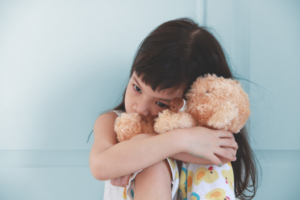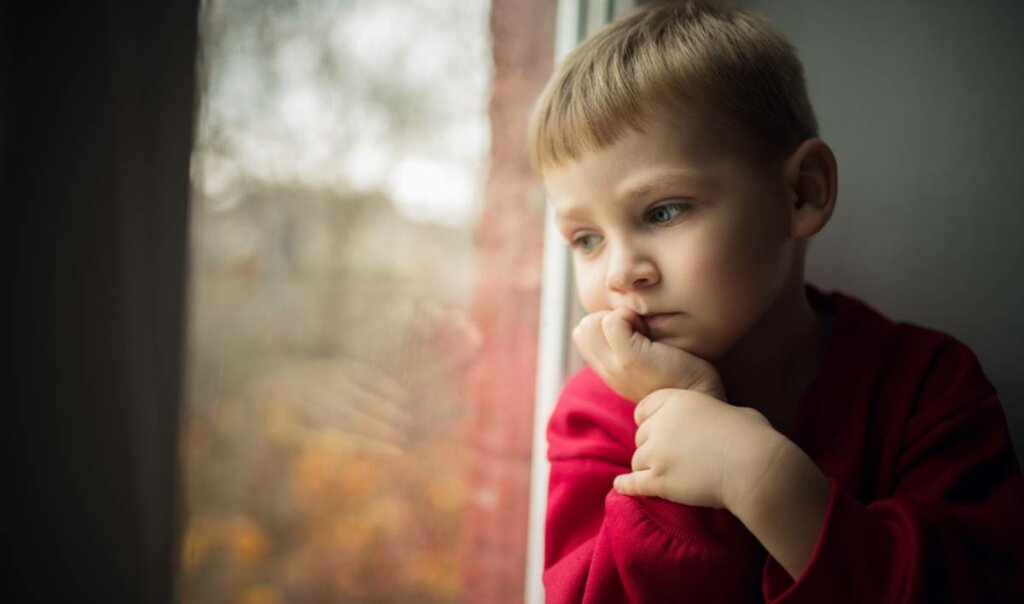Abandonment Trauma: The Wounds of Adoption


Written and verified by the psychologist Elena Sanz
Adoption is the alternative chosen by many fathers and mothers who can’t have biological children. However, when making this decision, they’re not always fully aware of the associated responsibility. In fact, raising a child is never an easy task. In instances of adoption, the little ones also have emotional baggage. Their issues must be understood, respected, and addressed. For this reason, today we want to talk to you about the wounds of adoption.
For an adoption to take place, a child has lost their original family. The reasons for this can be extremely diverse. For instance, the death of their parents, the intervention of social services, or even their parents choosing to relinquish custody. Whatever the reason, the unconscious feeling that lingers in the child’s psyche is the same: they’ve been abandoned.
Although it may seem that what happened at an early age isn’t remembered or doesn’t have a significant effect, in reality, it does. Even a baby adopted at just a few months of life will face a series of emotional challenges. Their adoptive parents must be prepared to accept this fact.

The wounds of adoption
When we think of an adopted child, we tend to consider that they’ve been lucky as they’ve been saved from a horrible situation by their new family. Therefore, we believe that they should be happy and grateful for their new life. However, in reality, the process is much more complex. In fact, far from this kind of idealization, adoption can open up several wounds.
Attachment bond and abandonment trauma
The wound of abandonment is the main negative consequence of adoption. The attachment bond, which is formed during the first months and years of life, is decisive for an infant’s confidence and emotional health. In the case of an adopted child, an insecure attachment is generated. This is due to the separation from their mother and family of origin.
For this reason, the child grows up internalizing the idea that they’re not worthy of love. They don’t trust themselves or others and can become overly compliant or, on the contrary, evasive and fearful. In addition, any small negative signal from their environment will trigger that primary wound and the fear of suffering abandonment again. It can generate maladaptive behaviors and great discomfort.
The feeling of being a second choice
This doesn’t happen in all cases; but, as we said, adoption is often the alternative for parents who can’t have biological children. Thus, for that child, knowing this fact can make them feel like a second choice. In effect, they’re like Plan B, the one that was used as a last resort.
Obviously, this damages their self-esteem and generates a poor and negative self-concept. Furthermore, it’s an injury that might be with them for life if it isn’t addressed.
Identity problems
This type of conflict is more common during adolescence, a period especially prone to the search for identity. This task is complex for any young person. However, it’s much more so for those who’ve been ‘dispossessed’ of their roots, are unaware of their origins and history, and find it difficult to identify with their adoptive family.
The difficulty is notably increased in the case of intercountry adoptions and, above all, transracial adoptions (when the child is of a different race or ethnic origin than the parents). In these cases, the child lives immersed in a culture that’s not their own (which they may be completely unaware of) and is surrounded by people who look completely different.
This not only increases the risk of suffering harassment or racism from others but also complicates the construction of their identity and sense of self.
Environment invalidation
Finally, one of the great wounds of adoption is the invalidation that these children and adults suffer throughout their lives. The whole environment, and usually the adoptive parents as well, expect these children to be extremely grateful for having been adopted and to devote themselves to ‘reciprocating’ what they’ve received.
Adoption is complex. There’s trauma and damage, and adaptation can be really difficult. Thus, it’s really common for conflicts, and emotional and behavioral problems to arise. Furthermore, it’s natural for the individual to want to know about their origins and even look for their biological family. However, when this happens, they’re often branded as ungrateful, selfish, and troublemakers. In effect, their emotions are neither understood nor validated.

Information and awareness are needed
Any adult who wishes to adopt must do so with great awareness and make sure they’re well informed in advance. It must be borne in mind that the purpose of adoption is to seek the well-being of an abandoned minor, and not to satisfy a desire to be a parent.
From this perspective, it can be understood that the emotional needs of these children are specific and require large doses of love, understanding, patience, and determination on the part of the adoptive parents. Psychological support can be extremely positive in these cases to help both parties.
All cited sources were thoroughly reviewed by our team to ensure their quality, reliability, currency, and validity. The bibliography of this article was considered reliable and of academic or scientific accuracy.
- Brodzinsky, D., Gunnar, M., & Palacios, J. (2022). Adoption and trauma: Risks, recovery, and the lived experience of adoption. Child Abuse & Neglect, 130, 105309.
- Vinke, A. J. G. (2020). Intercountry adoption, trauma and dissociation: Combining interventions to enhance integration. European Journal of Trauma & Dissociation, 4(4), 100169.
This text is provided for informational purposes only and does not replace consultation with a professional. If in doubt, consult your specialist.








